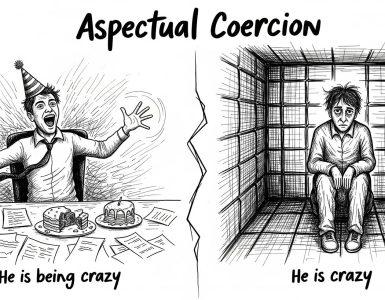Before we begin with the structure behind the interrogative mood it would be nice to know what a grammatical mood is. A grammatical mood is a set of grammatical structures we use to mark the purpose of a sentence. In a very general sense, we can use language to fulfill one of these proposes:
- To give information to someone
- To ask for information from someone
- To give orders to someone (we can consider requests as polite orders)
- To express our personal feelings
For our brain to understand the purpose of each sentence we mark it with different grammatical structures and we have grammatical names for each set of structures:
- We use “declarative mood” (or indicative mood) to give information to someone
- We use “interrogative mood” to ask for information from someone
- We use “imperative mood” to give orders to someone
- and we use “exclamatory mood” to express our personal feelings
note: to make it simpler I considered conditional and subjunctive moods sub-types of the declarative mood.
The relationship between declarative and interrogative moods
There is a direct relationship between the above-mentioned moods. For every set of information that we offer in the declarative mood, there should be a way to ask a question, and it may come as a surprise to you that there is usually only a handful of marked information sets we use to transmit information. Here is an overview of the marked information sets we provide in the declarative mood. Take a look at the following table:
| POS | Function | Type | Purpose |
| Noun | Subject | person or thing doing the action | |
| Object | person or thing that the action is done to | ||
| Possessive noun | person or thing that something belongs to | ||
| Verb | Verb Phrase | action or the state declared in the sentence | |
| Adjective | Attributive adjective | Attributive of the noun | |
| Adverb | Time | Time | time in which the action happened |
| Duration | duration of the action | ||
| Frequency | frequency of action happening | ||
| Place | Place | place of that action | |
| Movement | direction to/from which the action happened | ||
| Distance | distance from the place of action | ||
| Manner | way the action happened | ||
| Degree | degree of an adjective or adverb | ||
| Determiner | Quantity | Countable | number of things mentioned |
| Uncountable | amount of things mentioned | ||
This table shows the most important marked information we transmit in each sentence. There are more specific data sets that are not mentioned which are usually made from a combination of a preposition and a noun (acting as an adverb in the sentence) like “instrument of action” which is expressed by using “with” + “a noun” (with a hammer).
Now for each element, there is at least one way to ask for information. Sometimes it is done by using a single question word and sometimes it is done by using a compound question word or a special structure. Here is a table showing the way to ask for information about each element:
| POS | Function | Type | How to ask a question |
| Noun | Subject | What / Which / Who | |
| Object | What / Which / Who (whom) | ||
| Possessive noun | Whose | ||
| Verb | Verb Phrase | What + do* | |
| Adjective | Attributive adjective | what + attribution noun** | |
| Adverb | Time | Time | When / What time |
| Duration | How long | ||
| Frequency | How often | ||
| Place | Place | Where | |
| Movement | Where + preposition of movement | ||
| Distance | How far | ||
| Manner | How | ||
| Degree | How + Adjective/adveb*** | ||
| Determiner | Quantity | Countable | How many |
| Uncountable | How much | ||
* To ask about the action that happened in a sentence we use the structure “what + do”. Here the verb do acts as a pro-verb and stands as the whole verb phrase in the question (verb + all objects); for example, “What did you do last night?” to which the answer would include a verb (e.g. I played video games last night).
** In order to ask a question about an adjective in a sentence you have to use the name of that attribution. For example in order to ask about the color of something you say “what color is that?” to which the answer is an adjective (e.g. red).
*** In order to ask the degree of an adjective or adverb we use “how + that adjective/adverb” for example “How fast were you driving?” to which the answer would be “I was driving very fast”
* Photo by Towfiqu barbhuiya on Unsplash





Add comment